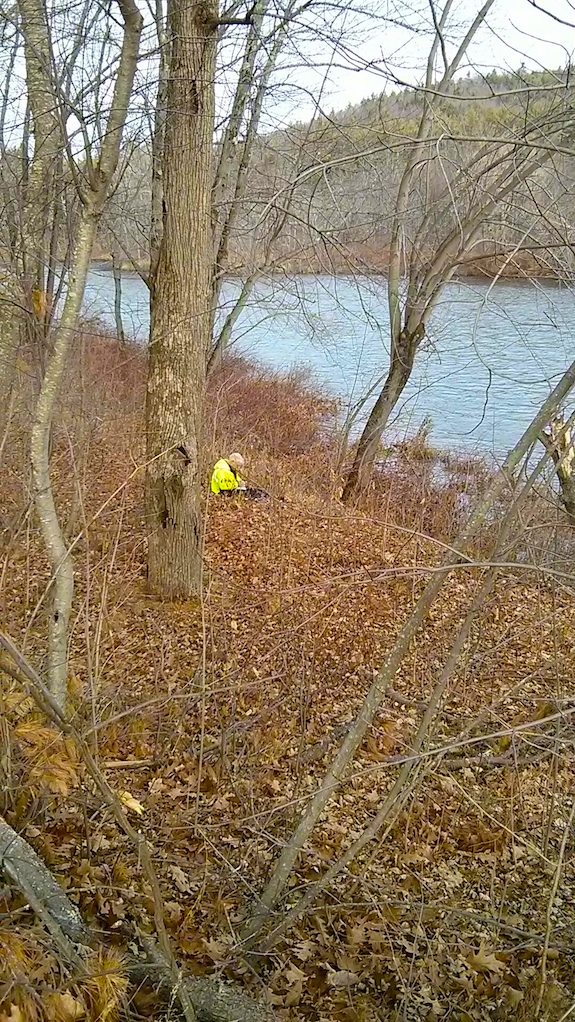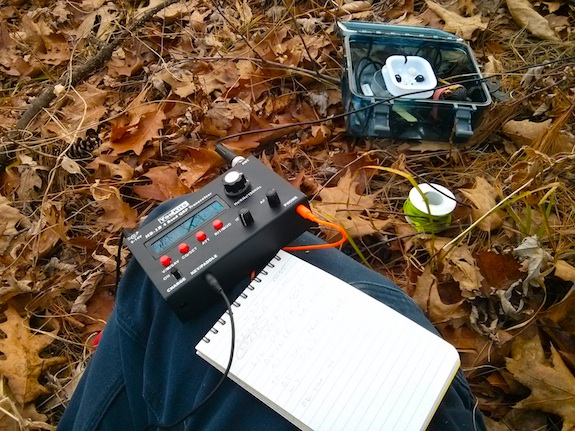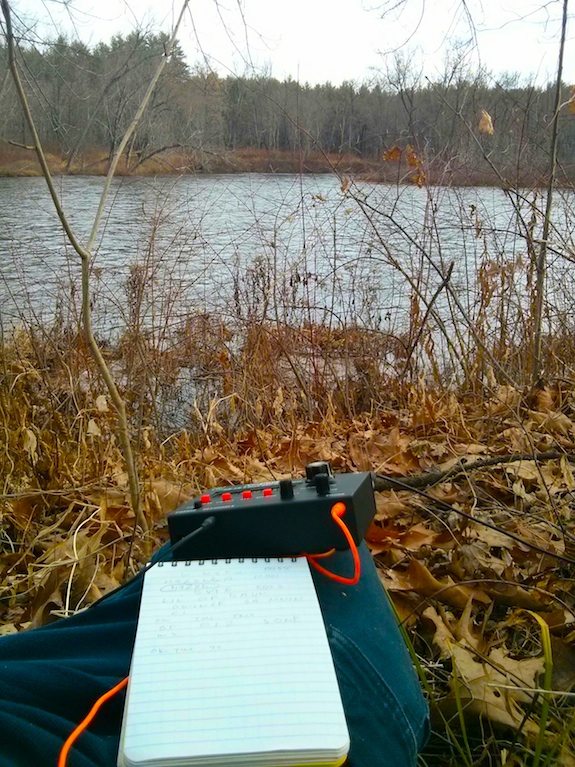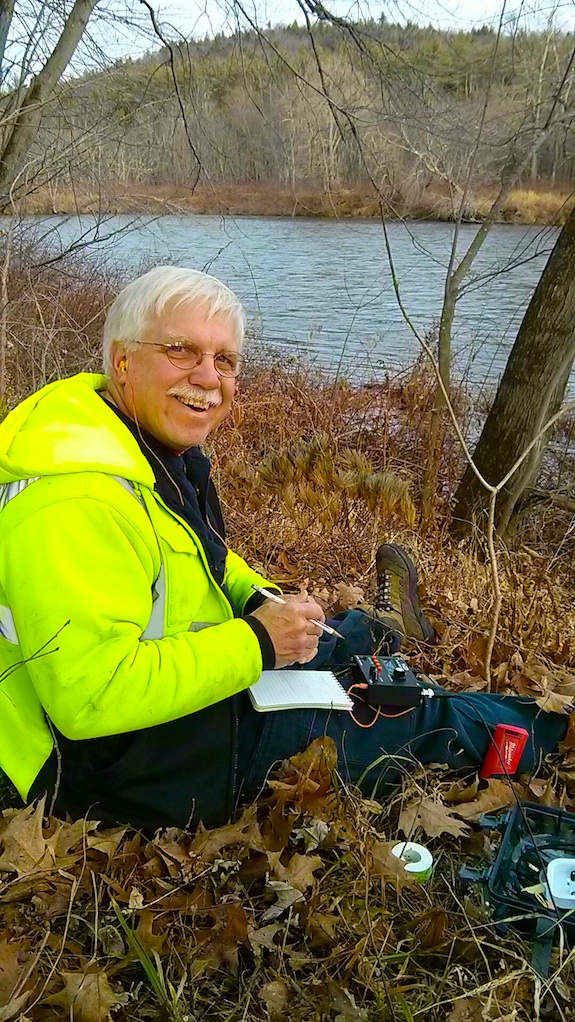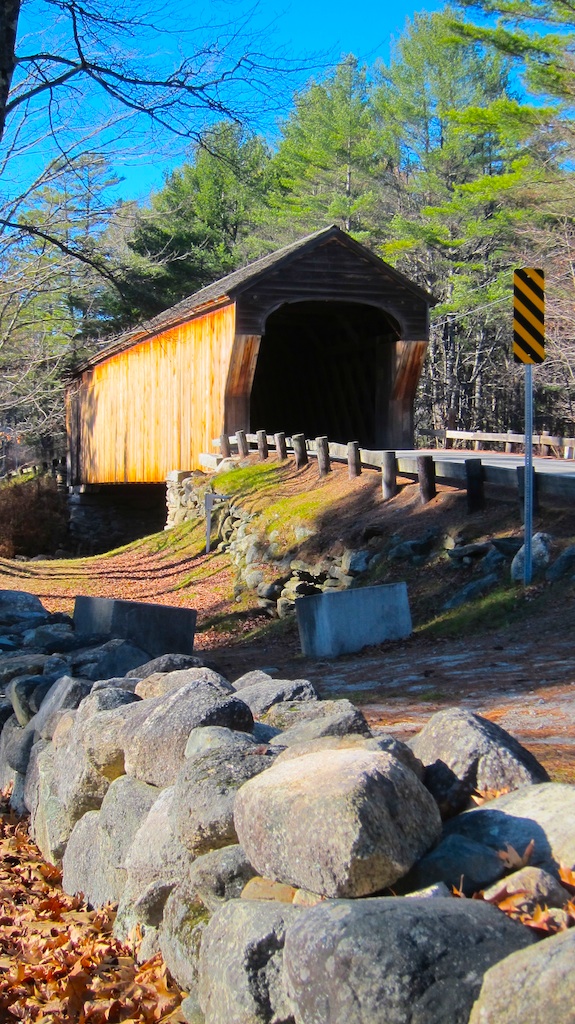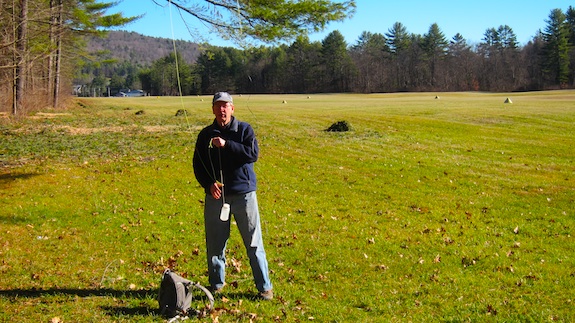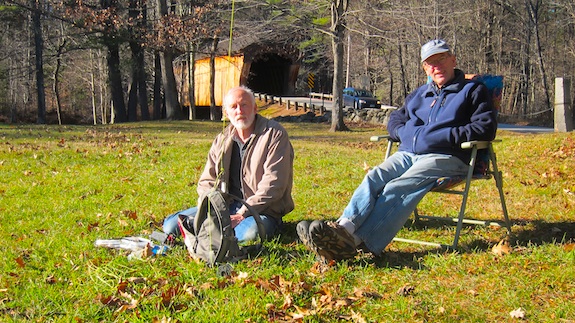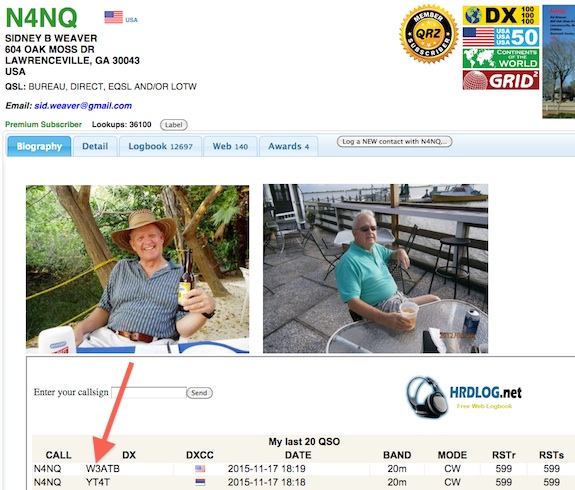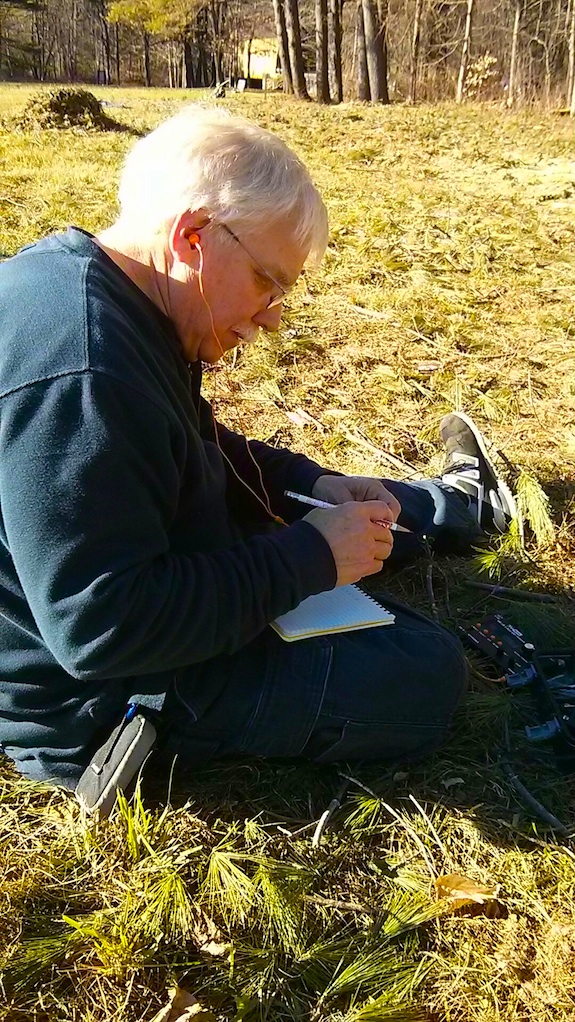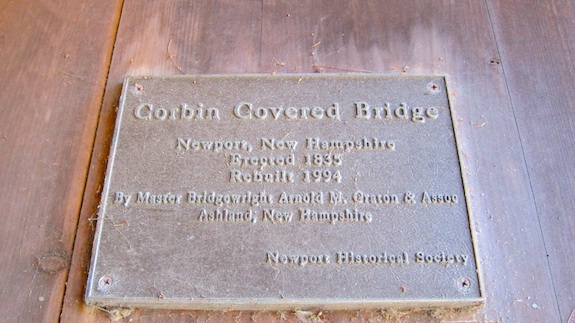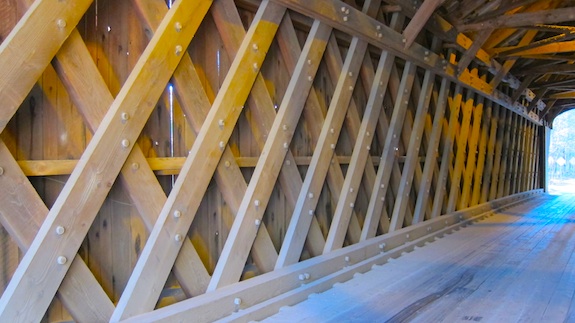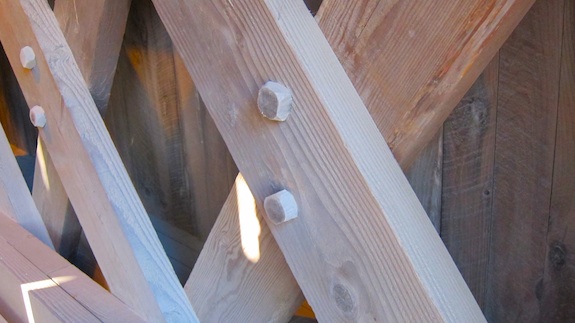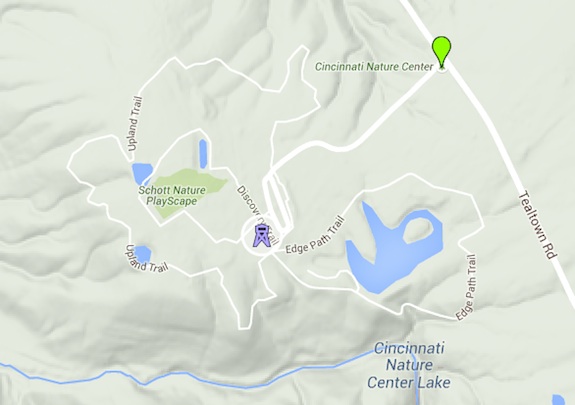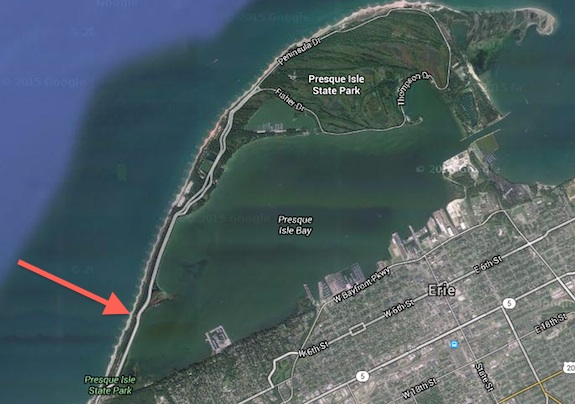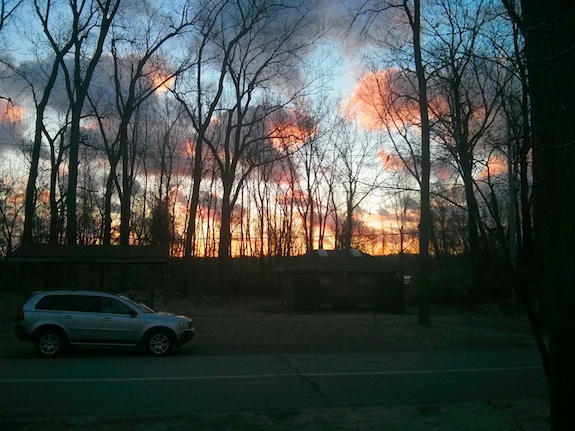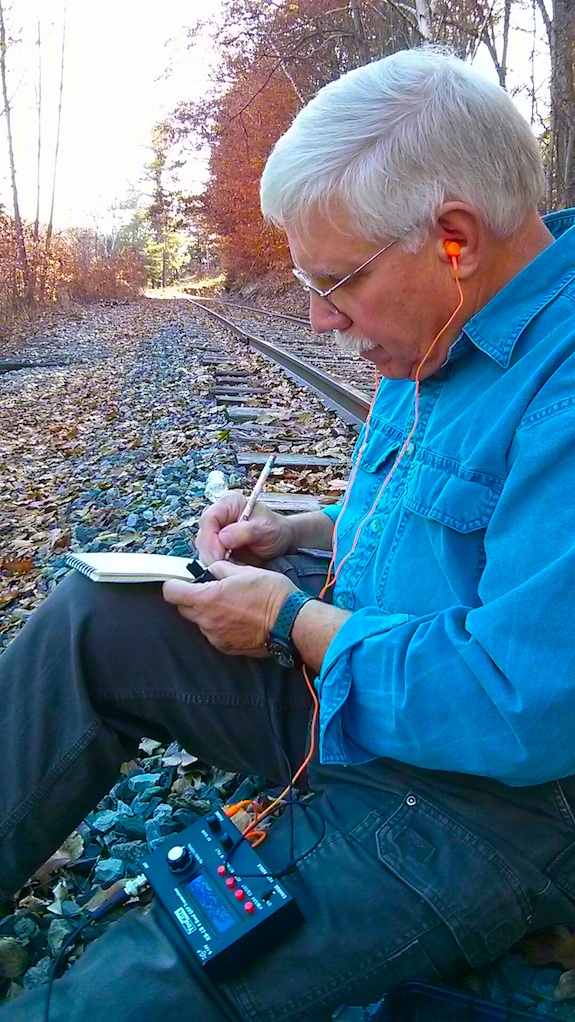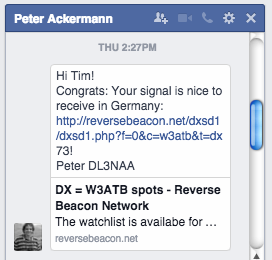Yesterday, the day after Thanksgiving, I had the rare opportunity to do outdoor radio with three seasoned QRP operators: W1PID – Jim Cluett, K1SWL – Dave Benson and W1JSB – Hanz Busch.
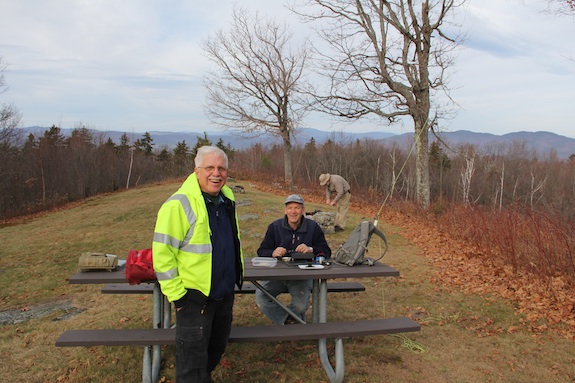
Here I am with Jim Cluett and Dave Benson. Photo credit: Hanz Busch – W1JSB
We decided to meet at Winslow State Park on the northwest flank of Mt. Kearsarge in Winslow, NH.
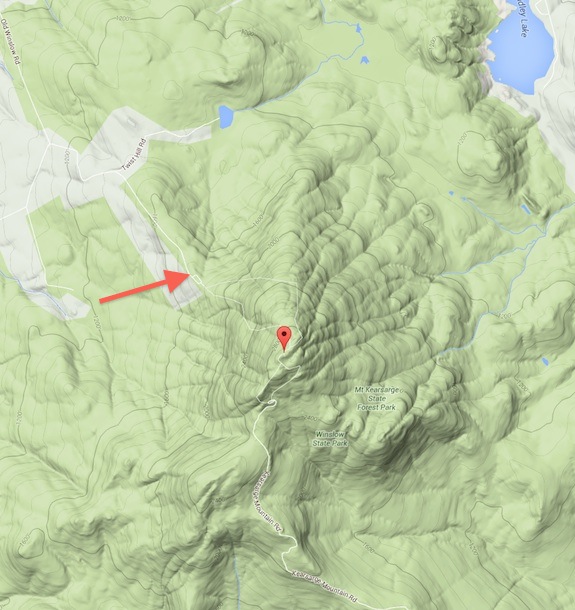
The tip of the red arrow points to a rare flat spot on the flank of Mt. Kearsarge. The view to the west, north and east is dramatic. Image credit: Google Maps
The WX was forecast to be extremely warm, as much as 15-20 degrees above normal. It was warm down in the valleys, but it was quite windy and chilly as we settled in to have some fun.
The last time I operated from this picnic area the black flies ruled the day. I suffered for a month from the bites of those little devils. Today, there were no bugs, and we were rewarded with some very good contacts.
It didn’t take long for Jim to set up. He’s been doing outdoor radio for so many years he knows how to set up his 28-foot wire in a tree faster than you can say “Practice fifteen minutes a day every day and you can be a respectable CW operator in six months or less.”
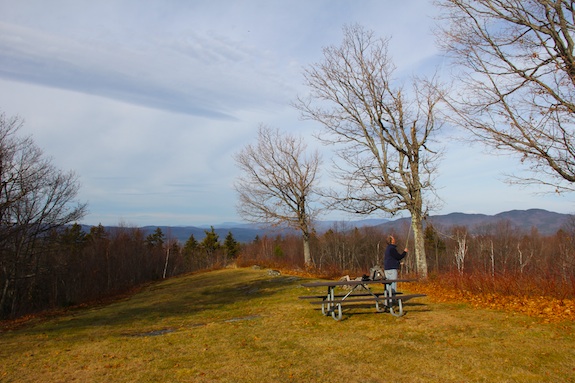
Here is Jim Cluett, W1PID, setting up his halyard. He can almost always get the right branch first throw. Photo credit: Hanz Busch W1JSB
Dave and Jim decided to operate at the end of the flat prominence while Hanz and I selected a picnic table about fifty feet south.
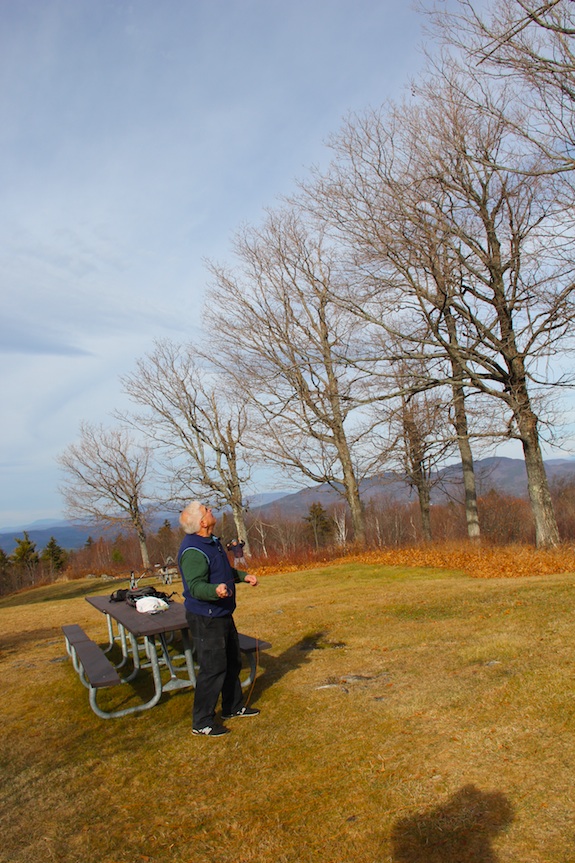
Here I am about ready to release a small piece of railroad ballast that’s tied to a 3-foot length of 3/16-inch parachute cord. Photo credit: Hanz Busch
It was partly cloudy with a strong wind. At first I thought there’d be enough solar radiation to keep me warm, but I was wrong.
I had an excellent throw my first time up into the trees next to the picnic area. I’ve discovered that you must use a thicker piece of cord that’s attached to a partially filled water bottle, a rock or some other weight. If you just use thin, 1/16th-inch, micro cord only you’ll get a nasty rope burn as the twirling object releases and sails to the sky.
While Hanz and I set up, Jim was busy. He wastes no time making DX contacts. Here’s his list of contacts for the day:
VP5/W5CW Turks and Caicos
PJ6/OH3JR Saba Island
CT9/LZ2JR Madeira Island
CN2R Morocco
EA8/RC5A Canary Island
PJ4/KU8E Bonaire
Hanz and I started out with my reliable YouKits HB-1B, but soon we switched to the MFJ 20-meter cub radio Hanz helped me build over the past two years.
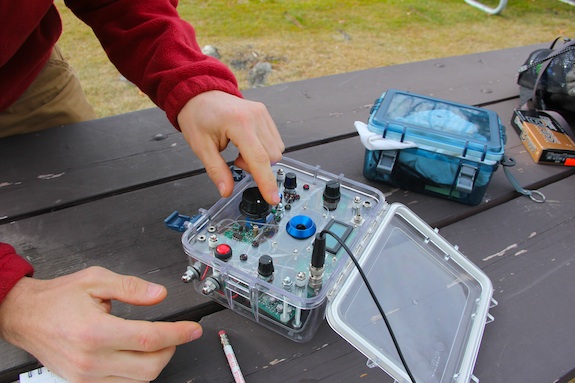
Here’s a dandy QRP radio. The MFJ 20M Cub. It’s 1.5 watts or so is more than enough power to have fun. Photo credit: Tim Carter – W3ATB
This radio, in my opinion, is a true QRP rig. On its best day it puts out just under 2 watts. It didn’t let us down as we worked two DX stations with the attractive radio and my resonant 20-meter dipole antenna hanging perfectly vertical from the tree next to us.
Before switching to the MFJ 20-meter cub Hanz said so very politely, “Tim, I don’t think your antenna is working as well as it could.”
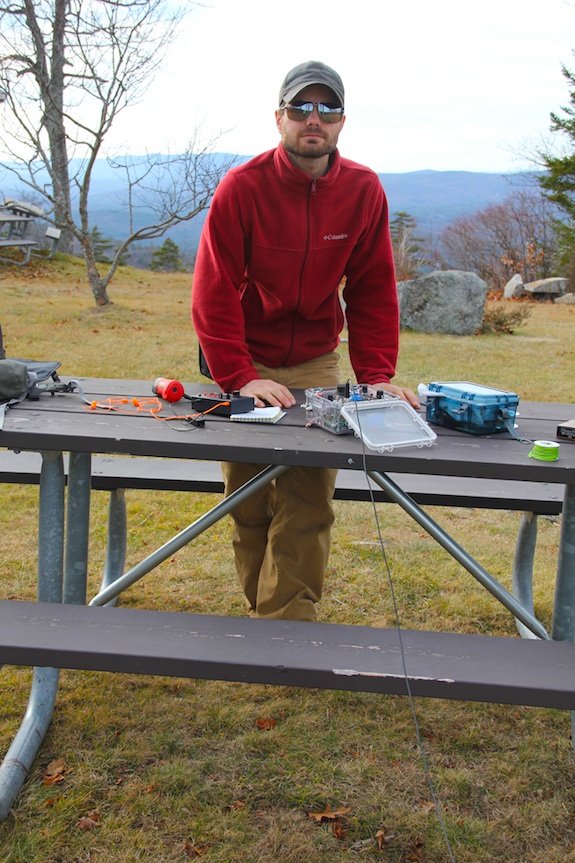
Here’s W1JSB, Hanz Busch. He’s quite serious in this photo. When you meet him, he’s got an infectious laugh. Photo credit: Tim Carter – W3ATB
He had been hearing strong signals coming through the HB-1B, but no one could hear him come back.
“I know the antenna is tuned just about perfectly for the part of 20 meters we’re working. We can set up my Par EndFedz antenna if you want,” I replied shrugging my shoulders. It didn’t matter to me what antenna we’d use.
“Let’s get out the Cub you helped me build and try it first.”
Hanz was agreeable to that as it took just ten seconds to disconnect the BNC connector to my RG-174 coax cable from the HB-1B and put it on the Cub. We rotated the power button and the Cub came alive!
Within thirty minutes the magical little Cub did some magnificent DX with the resonant 20-meter dipole. It turns out that sometimes you just have to put the blame on the propagation instead of the antenna. I had put the antenna on a tester, so I knew it was rock solid.
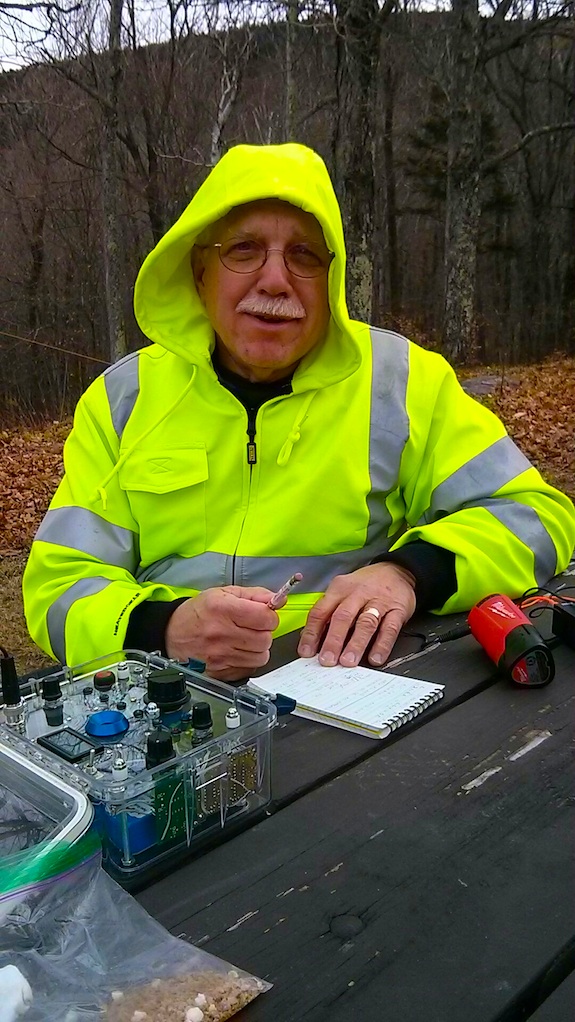
Here I am trying to stay warm in the windy conditions. The 20-meter Cub would not let us down on this day. Photo credit: Jim Cluett – W1PID
Our first contact was YT1AD in Serbia. He must do CW as a profession as he’s got over 117,00 lookups on QRZ.com! Some of that must be automatic contesting lookups from those operators who have their radios connected directly to QRZ or other databases.
Next up was WQ9H in Ft. Wayne, Indiana. Hanz had a short rag chew with Mike and he wished us well on our outside adventure.
It was time for more DX. Hanz snared a Ukrainian operator who was in the Canary Islands. It was: EA8/UA3RF. He was going fast – probably 35 WPM or better. That’s far beyond my humble current listening speed.
We finished up with Dick, W9AK in Wisconsin. He gave us a 589 signal report so the little Cub was doing just fine with its 1 or 2 watts.
While Hanz was operating I took a break and went down to visit Dave Benson, the founder of Small Wonders Lab. Dave’s got an admirable legacy with many QRP operators who have his creations in their shacks.
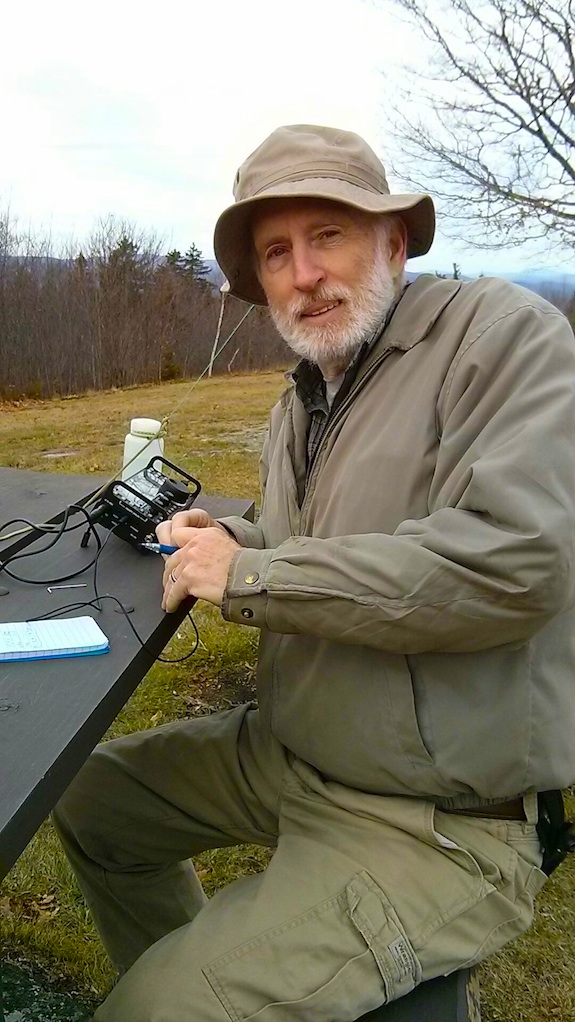
Here’s Dave Benson, K1SWL. He loves the outdoors and doing radio. Photo credit: Jim Cluett – W1PID
It was a fun outing and everyone there worked stations. Jim and Dave had the most flexibility with each of them using their Elecraft KX3 radios. The KX3 can cover all the HF bands so if one is dead, you try to go hunting elsewhere. Hanz and I could only do 20 meters and weren’t disappointed.
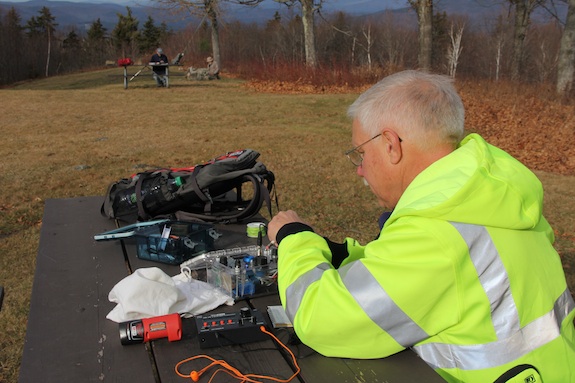
You’re looking due north and can see Jim and Dave grabbing code from the ether. Photo credit: Hanz Busch – W1JSB
After about an hour, we decided we’d had enough of the wind. We packed up and went down the mountain for a cup of coffee. Another successful outdoor outing!
As you can see from the map below, we have our choice of great mountains to operate from here in New Hampshire. We’re blessed with striking scenery and wide-open vistas.
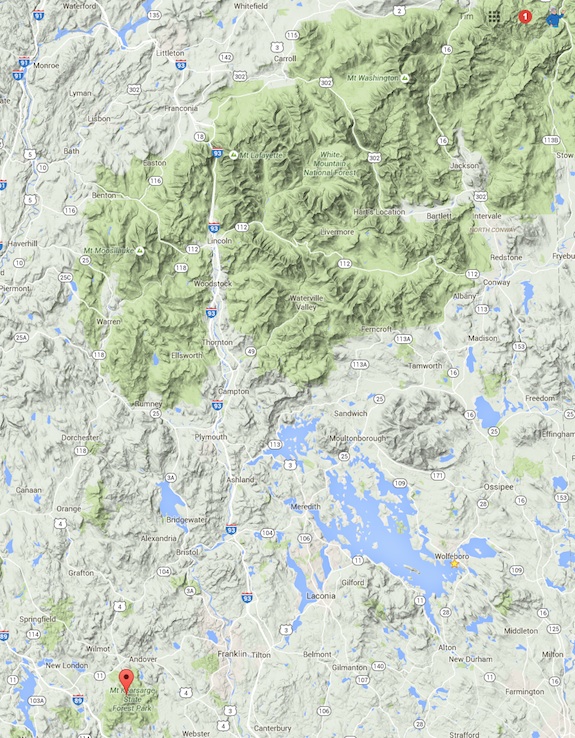
The red ballon shows Mt. Kearsarge in the lower left corner. That green patch of hills, well that’s the famous White Mountains of New Hampshire. Image credit: Google Maps

